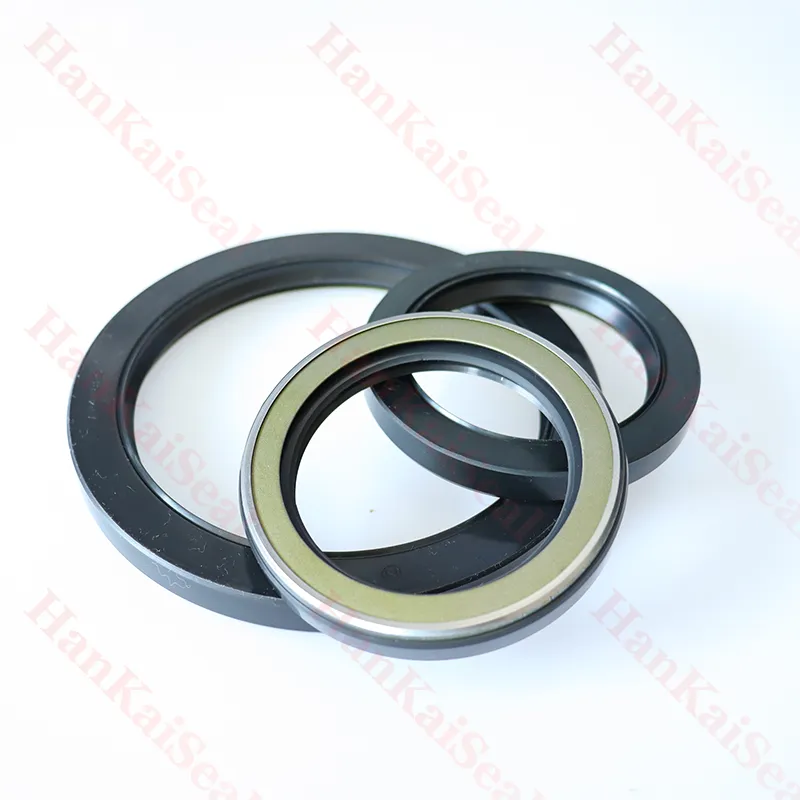Dec . 06, 2024 19:51 Back to list
Cylinder Rod Wiper Design for Improved Hydraulic System Performance and Maintenance Efficiency
Understanding Cylinder Rod Wipers Key Component in Hydraulic Systems
In the realm of hydraulic systems, efficiency and reliability are paramount. One crucial component that often goes unnoticed is the cylinder rod wiper. This simple yet effective device plays an essential role in ensuring the proper functioning and longevity of hydraulic cylinders. In this article, we will explore the functions, types, materials, and maintenance of cylinder rod wipers, shedding light on why they are indispensable in various industrial applications.
What is a Cylinder Rod Wiper?
A cylinder rod wiper, also known as a rod seal or dust seal, is designed to prevent contaminants such as dirt, dust, moisture, and other foreign particles from entering the hydraulic cylinder. It is typically installed at the outer end of the cylinder rod, where the rod emerges from the cylinder housing. The wiper serves as the first line of defense against contamination, which is essential for maintaining hydraulic fluid integrity and protecting internal components from premature wear.
Functions of Cylinder Rod Wipers
1. Contamination Prevention The primary function of a cylinder rod wiper is to prevent contaminants from entering the hydraulic system. As the rod moves in and out of the cylinder, it can drag dust and debris along with it. A well-designed wiper effectively removes these particles or prevents them from reaching the internal seals.
2. Fluid Retention Wipers help in retaining hydraulic fluid within the cylinder by preventing leaks that might occur at the rod entry point. This is vital for maintaining system pressure and ensuring optimal performance.
3. Extended Lifespan By reducing contamination and fluid loss, cylinder rod wipers significantly contribute to the longevity of hydraulic cylinders. They minimize wear on seals and other internal components, which can lead to costly repairs and downtime.
Types of Cylinder Rod Wipers
Various types of cylinder rod wipers are available in the market to cater to different applications and environments. The most common types include
- Lip Type Wipers These wipers feature a flexible lip that makes contact with the rod, effectively scraping away contaminants. They are widely used in various industrial settings for their robustness and effectiveness.
- U-cup Wipers Shaped like a U, these wipers provide a larger surface area for sealing, offering excellent protection against contaminants and leaks. They are ideal for applications with high contamination risks.
- V-Ring Wipers Known for their versatility, V-ring wipers can accommodate a range of rod sizes and are often used in applications where space is limited.
cylinder rod wiper

- Polyurethane Wipers These are made from durable polyurethane material, providing better wear resistance and longevity, particularly in harsh environments.
Materials Used in Cylinder Rod Wipers
The material used for cylinder rod wipers is critical for their performance and durability. Common materials include
- Nitrile Rubber Offers good resistance to hydraulic fluids and is widely used for standard applications.
- Polyurethane Known for its excellent abrasion resistance and mechanical strength, making it suitable for demanding conditions.
- Viton Provides high chemical resistance, ideal for hydraulic systems that use aggressive fluids.
Maintenance of Cylinder Rod Wipers
While cylinder rod wipers are designed to be durable, regular maintenance is essential for optimal performance. Here are some maintenance tips
- Regular Inspection Periodically inspect wipers for signs of wear, cracks, or deformities. Early detection can prevent costly failures.
- Cleaning Keep the area around the rod and wiper clean. Dirt accumulation can lead to faster wear of the wiper.
- Replacement If a wiper is worn or damaged, it should be replaced promptly to maintain system integrity.
In conclusion, cylinder rod wipers are a vital component in hydraulic systems, ensuring the reliability and longevity of hydraulic cylinders. By preventing contamination, retaining fluid, and extending component lifespan, they contribute significantly to the efficiency of various industrial applications. Understanding their types, materials, and maintenance can lead to improved operational effectiveness and reduced downtime, making them an essential focus for engineers and maintenance personnel alike.
-
TCN Oil Seal Metal Ring Reinforcement for Heavy Machinery
NewsJul.25,2025
-
Rotary Lip Seal Spring-Loaded Design for High-Speed Applications
NewsJul.25,2025
-
Hydraulic Cylinder Seals Polyurethane Material for High-Impact Jobs
NewsJul.25,2025
-
High Pressure Oil Seal Polyurethane Coating Wear Resistance
NewsJul.25,2025
-
Dust Proof Seal Double Lip Design for Construction Equipment
NewsJul.25,2025
-
Hub Seal Polyurethane Wear Resistance in Agricultural Vehicles
NewsJul.25,2025
-
The Trans-formative Journey of Wheel Hub Oil Seals
NewsJun.06,2025
Products categories
















